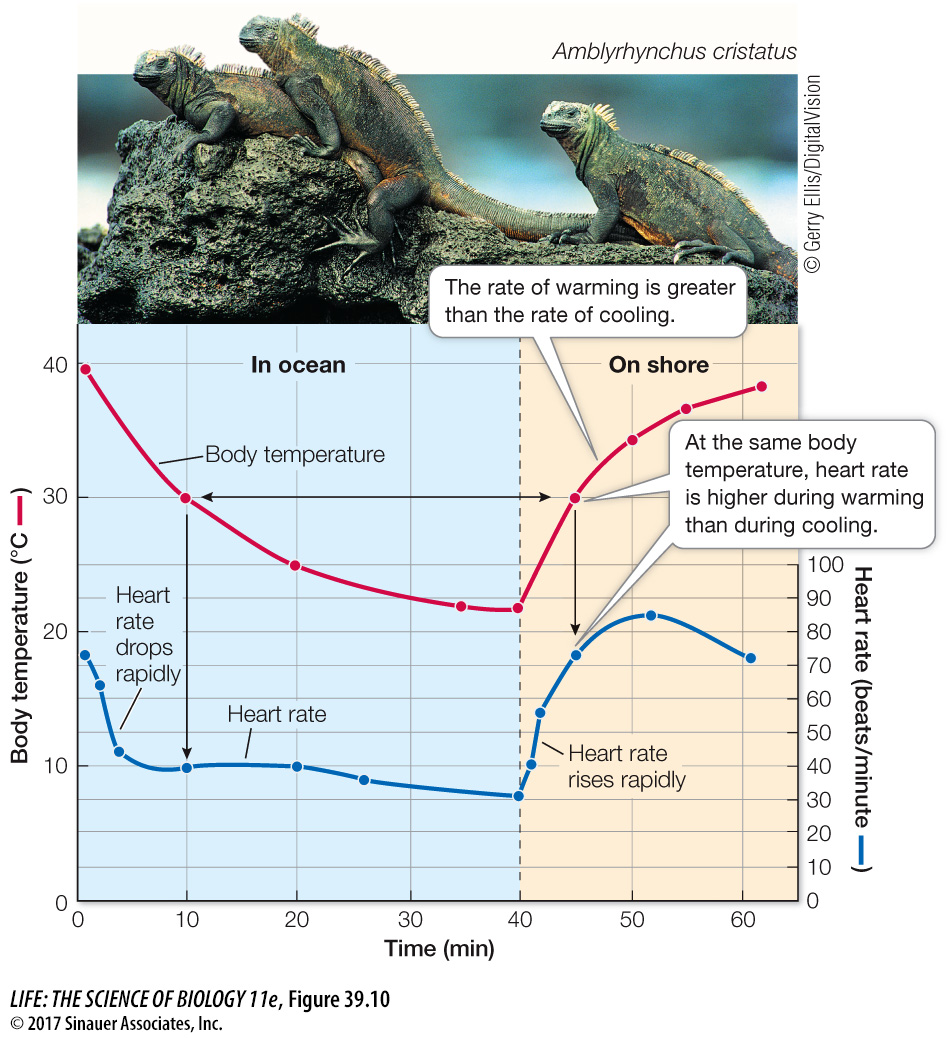Both ectotherms and endotherms control blood flow to the skin
Heat is mostly moved around the internal environment by blood flow. Heat produced in muscles during exercise is transported out of the muscle and to the heart in the blood. That heat is then distributed around the body by the blood, raising body temperature. Blood flow to the skin enables internal heat to be lost to the environment through radiation, convection, conduction, and evaporation, thus bringing the body temperature back toward normal. When body temperature is too low or the environment is too cold, the blood vessels supplying the skin constrict, reducing heat loss to the environment.
The ability to control blood flow to the skin can be an important adaptation for an ectotherm such as the marine iguana (a reptile) of the Galápagos archipelago (Figure 39.10). The Galápagos are volcanic islands that lie on the equator but are bathed by cold ocean currents. Iguanas bask on hot black lava rocks on the shore, and periodically enter the cold ocean water to feed on seaweed. While the iguanas are feeding, they lose heat to the cold ocean water. This cooling lowers their metabolism, making them slower, more vulnerable to predators, and incapable of efficient digestion. The iguanas therefore alternate between feeding in the cold seawater and basking on the hot rocks. It is advantageous for iguanas to retain body heat as long as possible while swimming and to warm up as fast as possible when basking. They accomplish these results by changing their heart rate and thus the rate of blood flow to their skin and around their bodies.

835
What about furred mammals? Fur acts as insulation to keep body heat in, making it possible for mammals to function in cold environments. When they are active, however, mammals must get rid of excess heat, and it does little good to transport that heat to the skin under the fur. Thus, as mentioned at the opening of this chapter, mammals have specialized blood vessels for transporting heat to their hairless skin surfaces. Heat loss from these areas is tightly controlled by the opening and closing of these blood vessels. When you are cold, the blood flow to your hands and feet decreases and they feel cold, but when you exercise, the blood vessels serving these skin areas dilate increasing the blood flow and therefore the heat dissipation.
Media Clip 39.1 Thermoregulation in Animals
www.life11e.com/